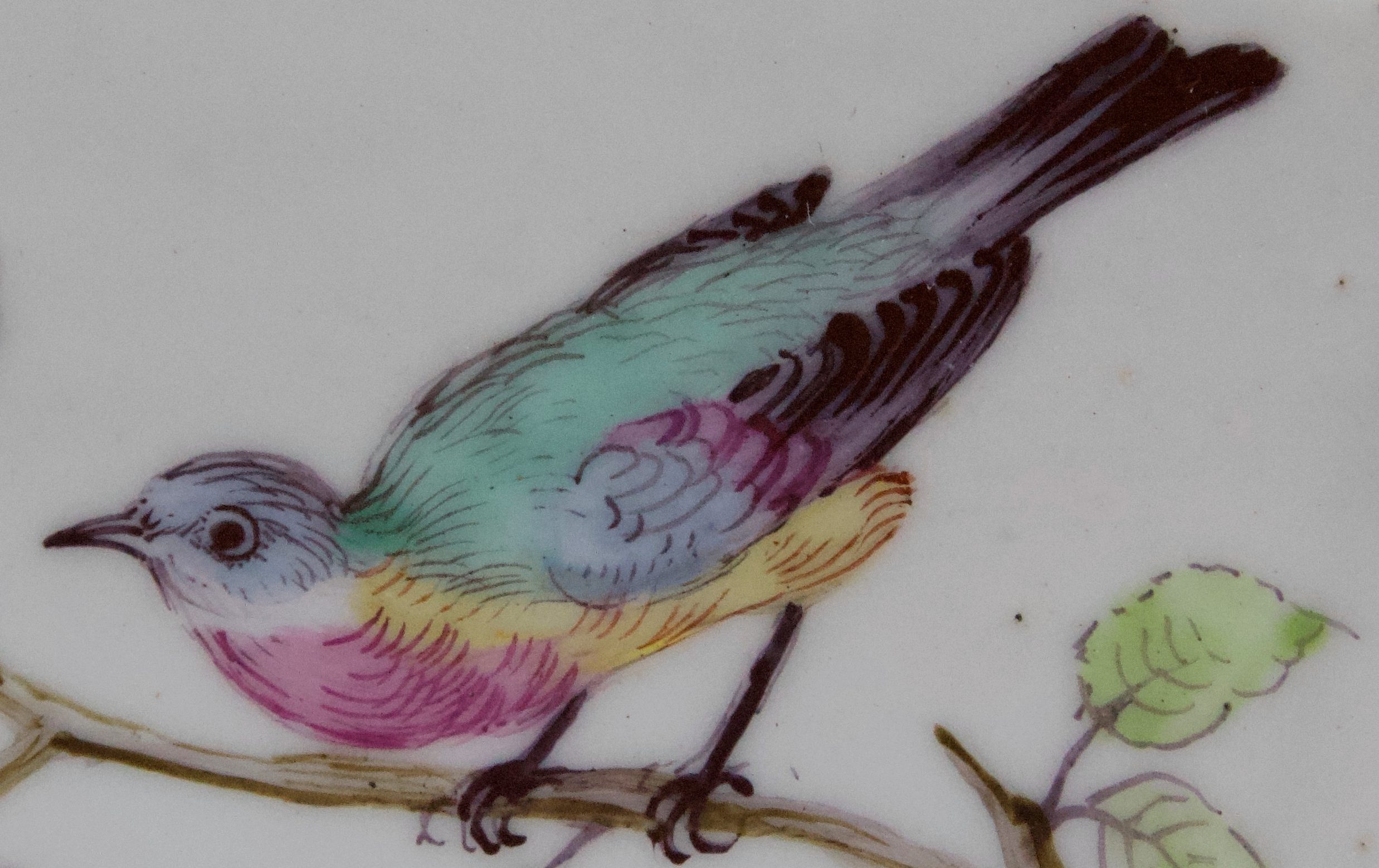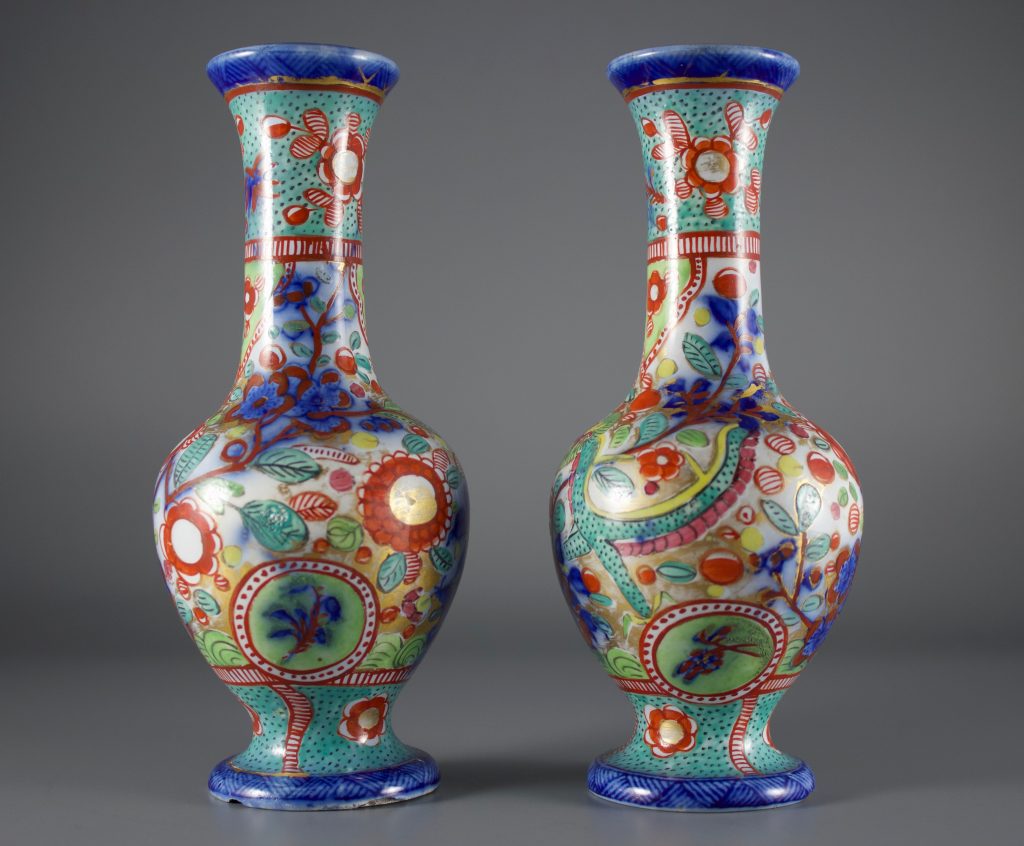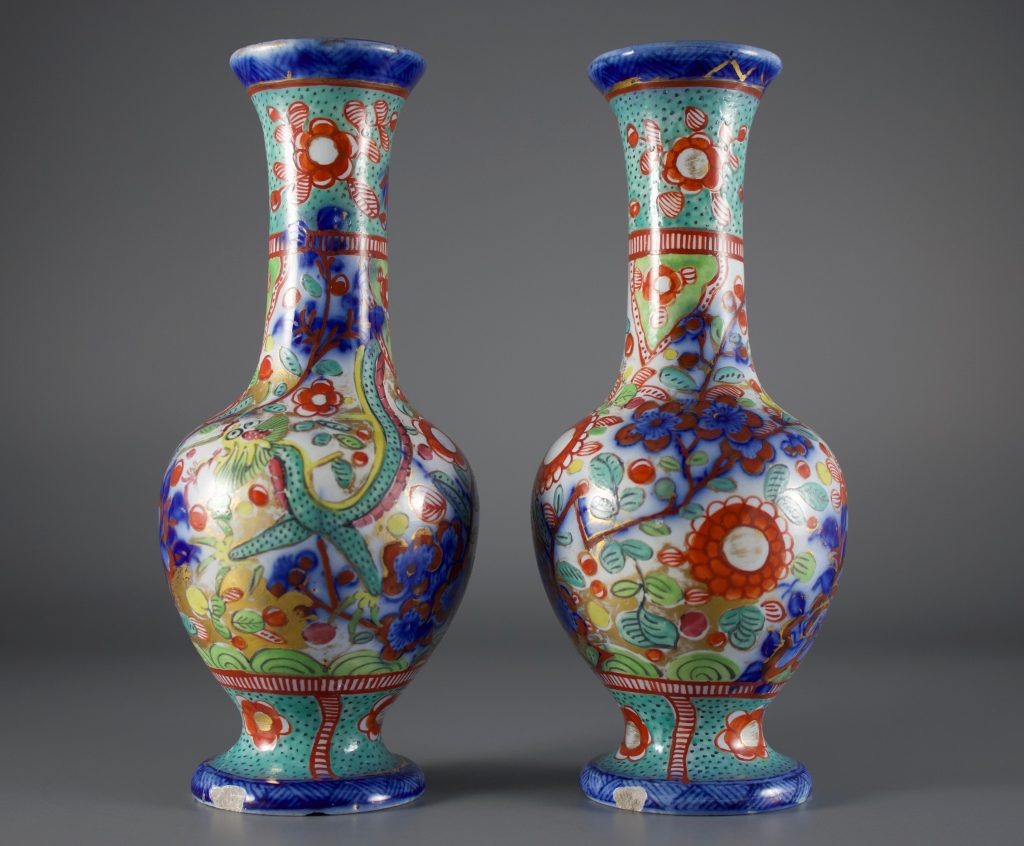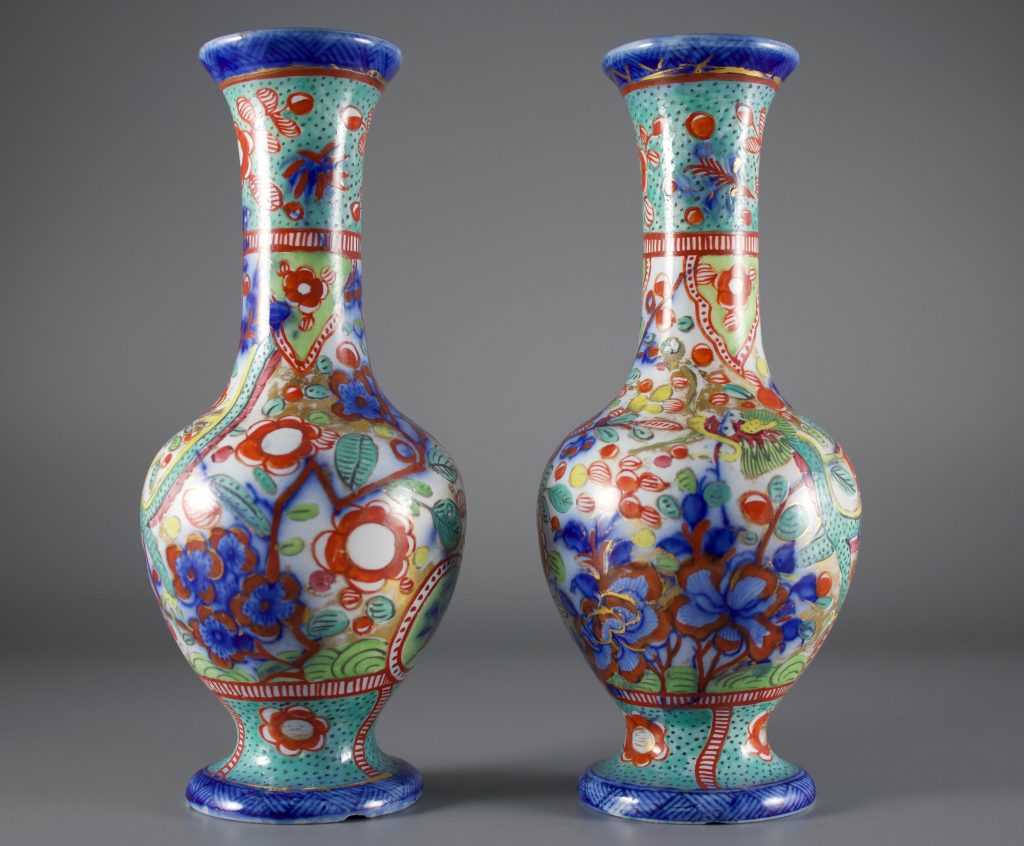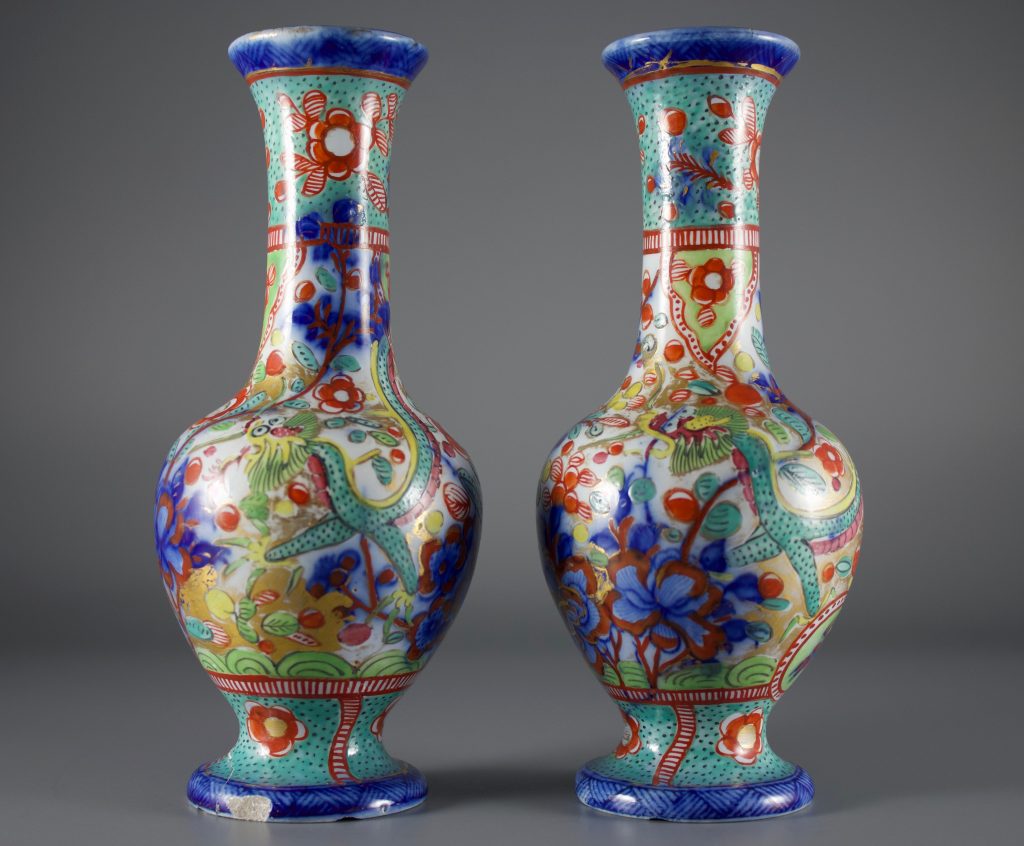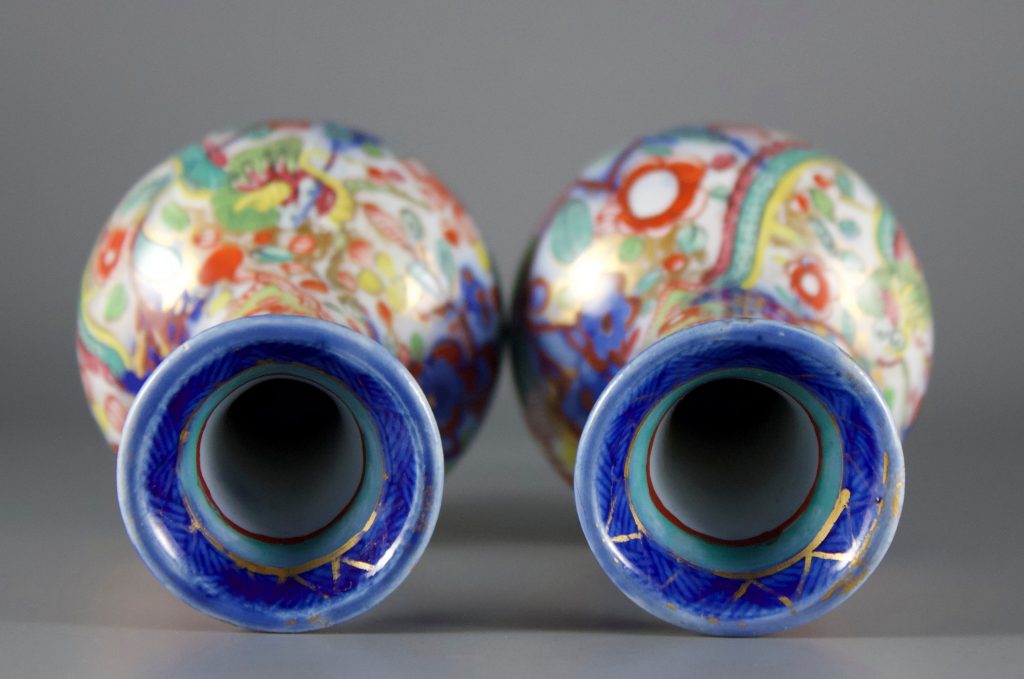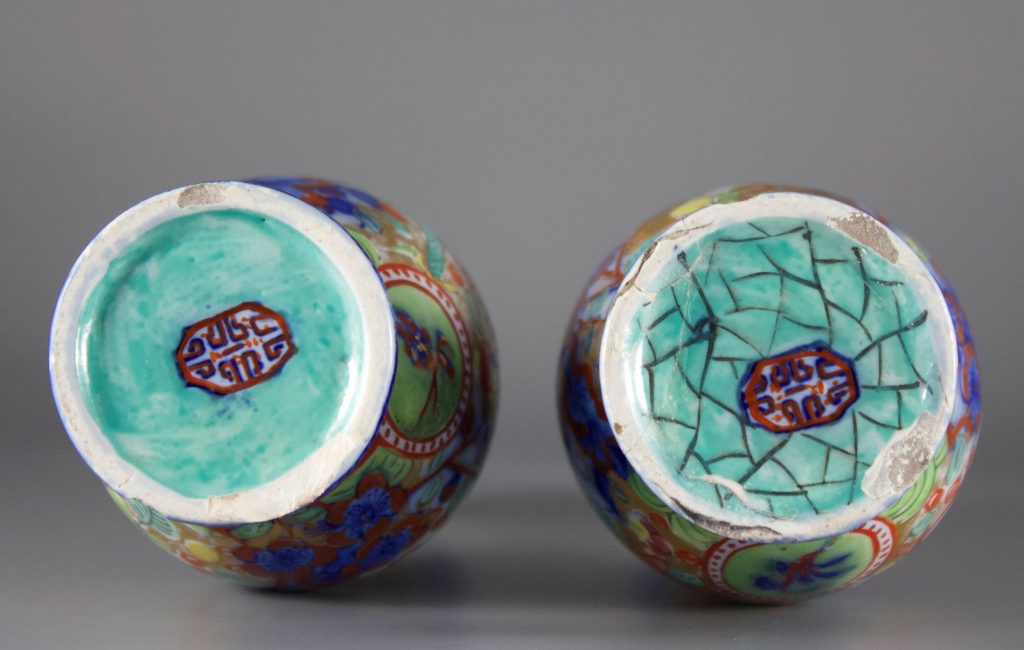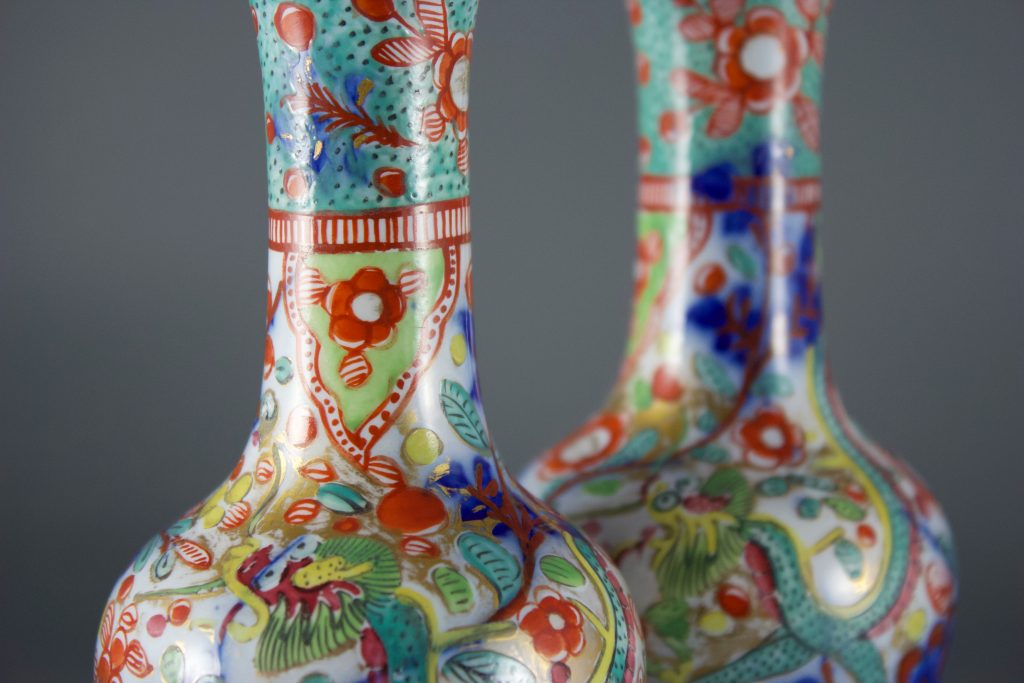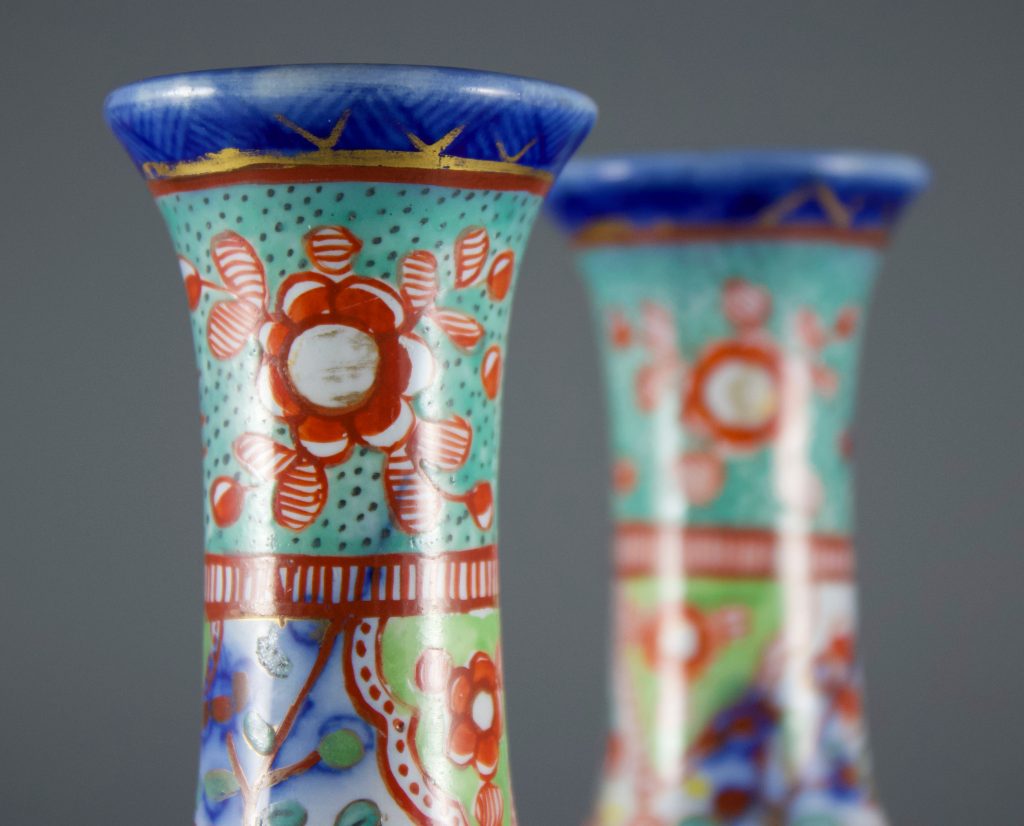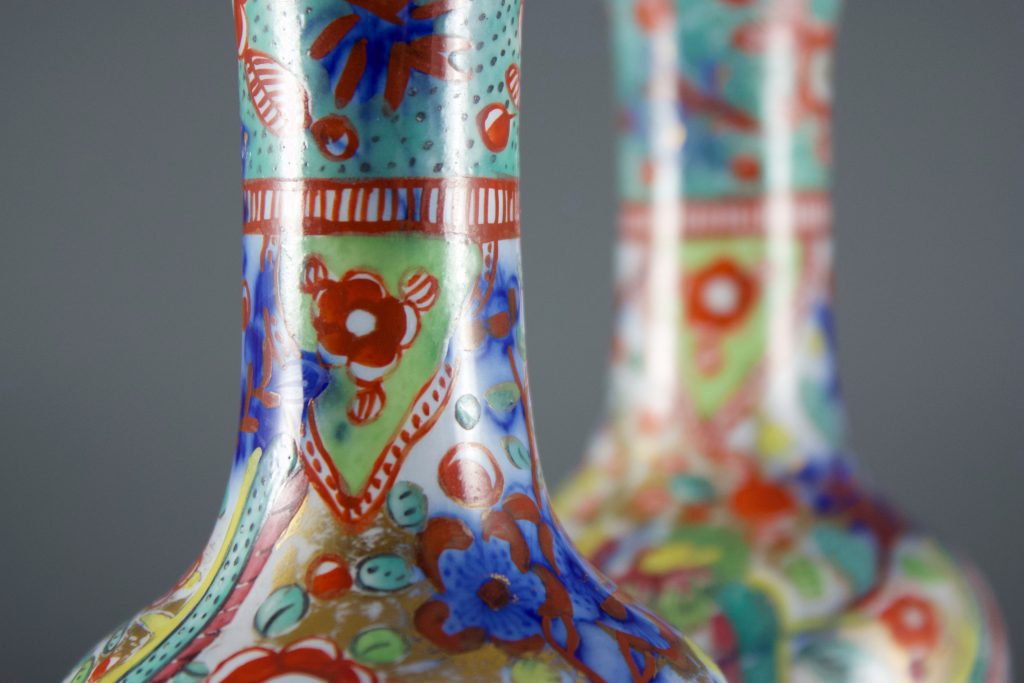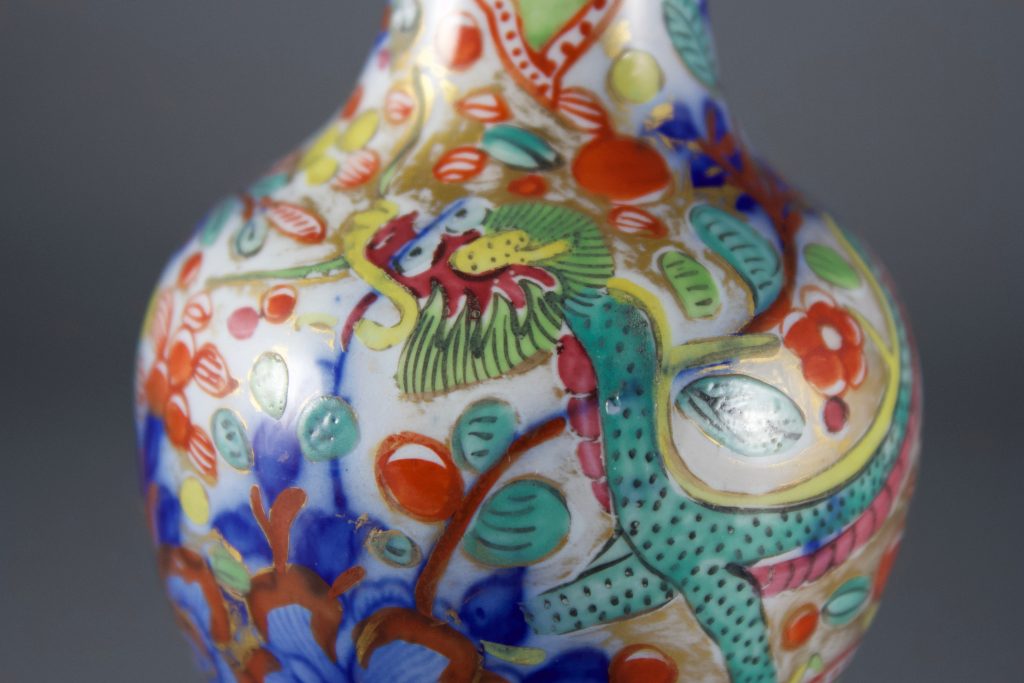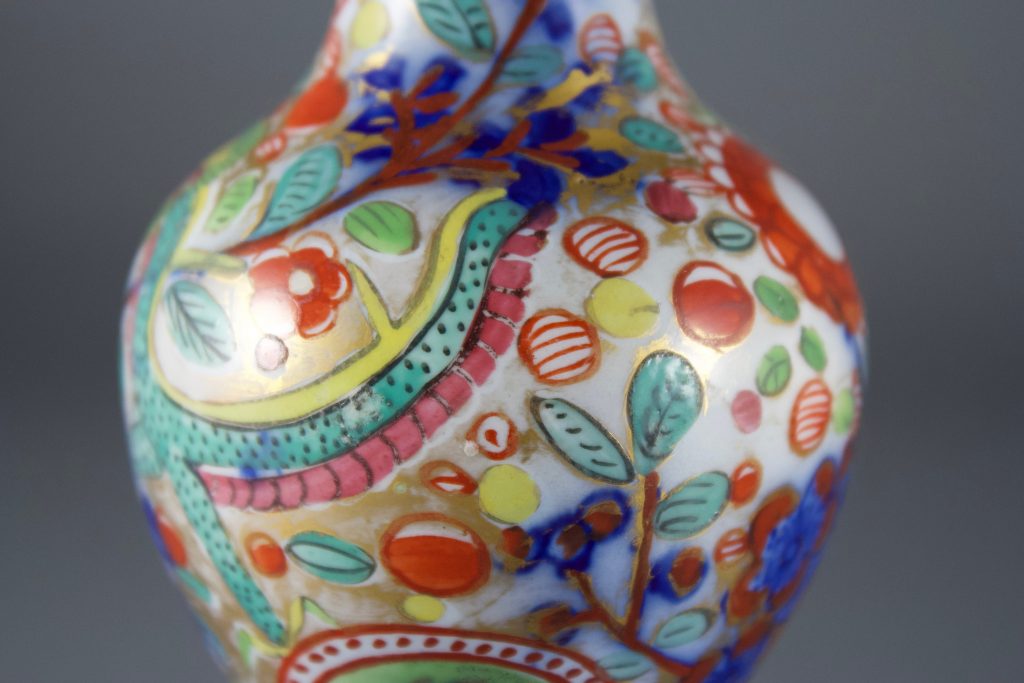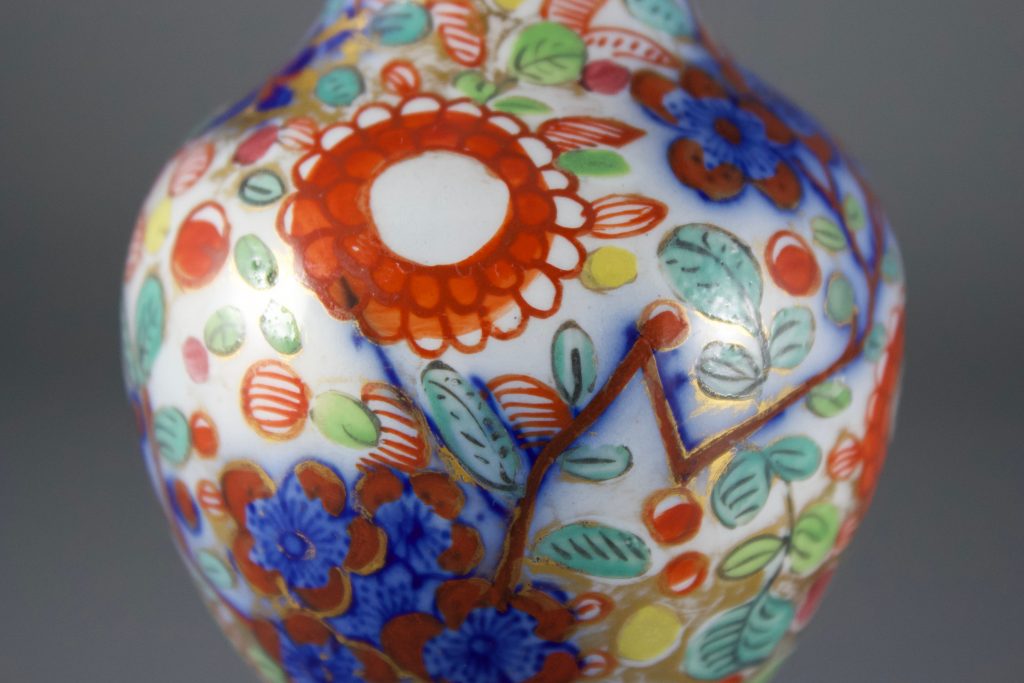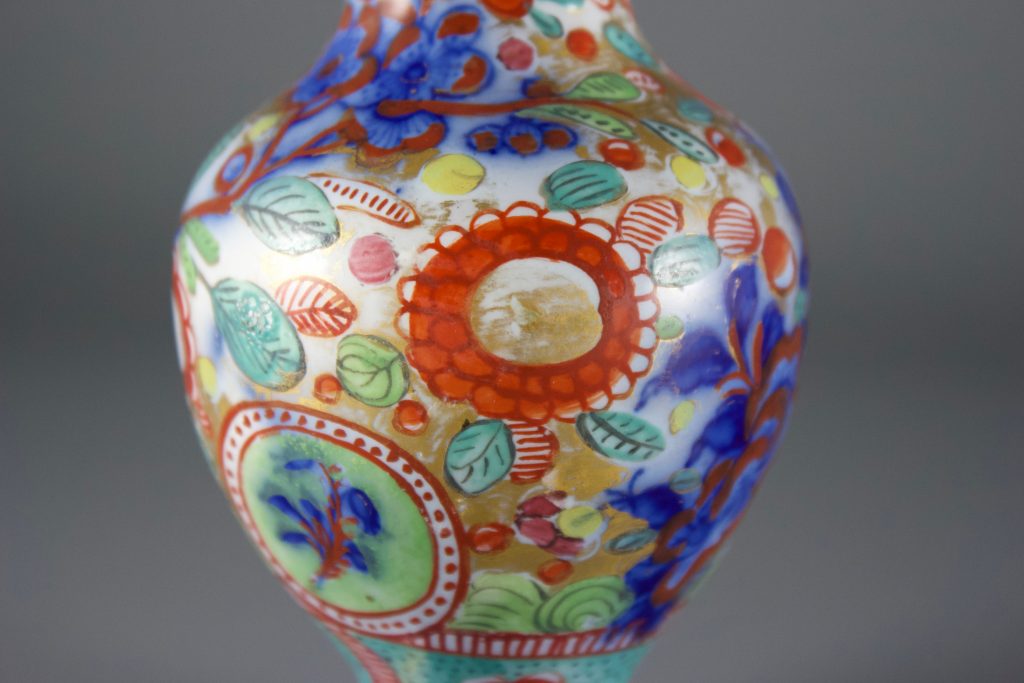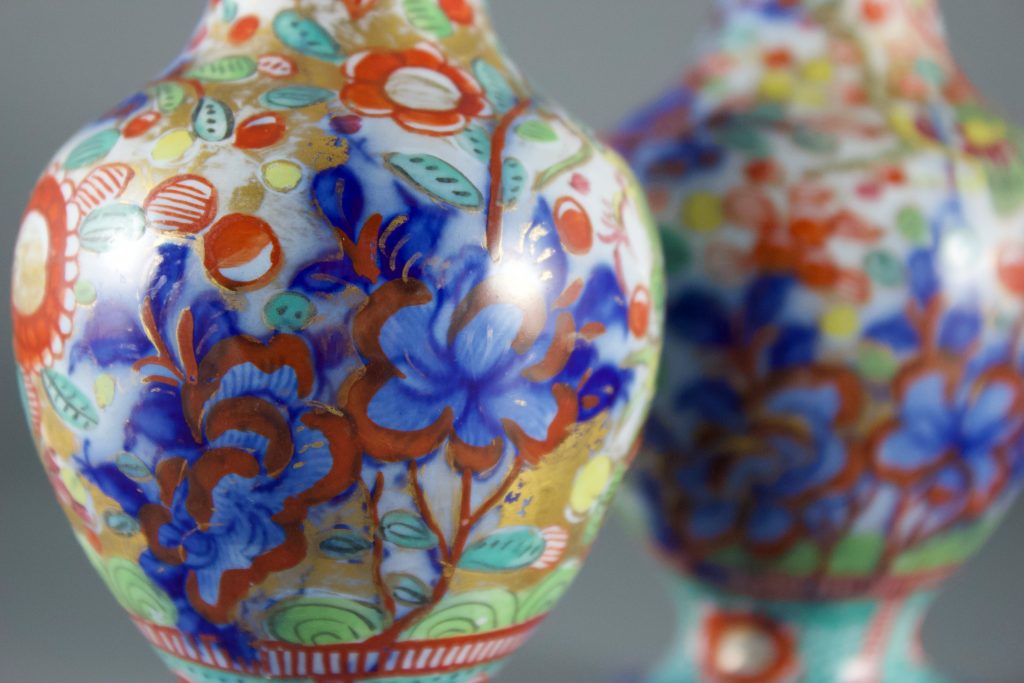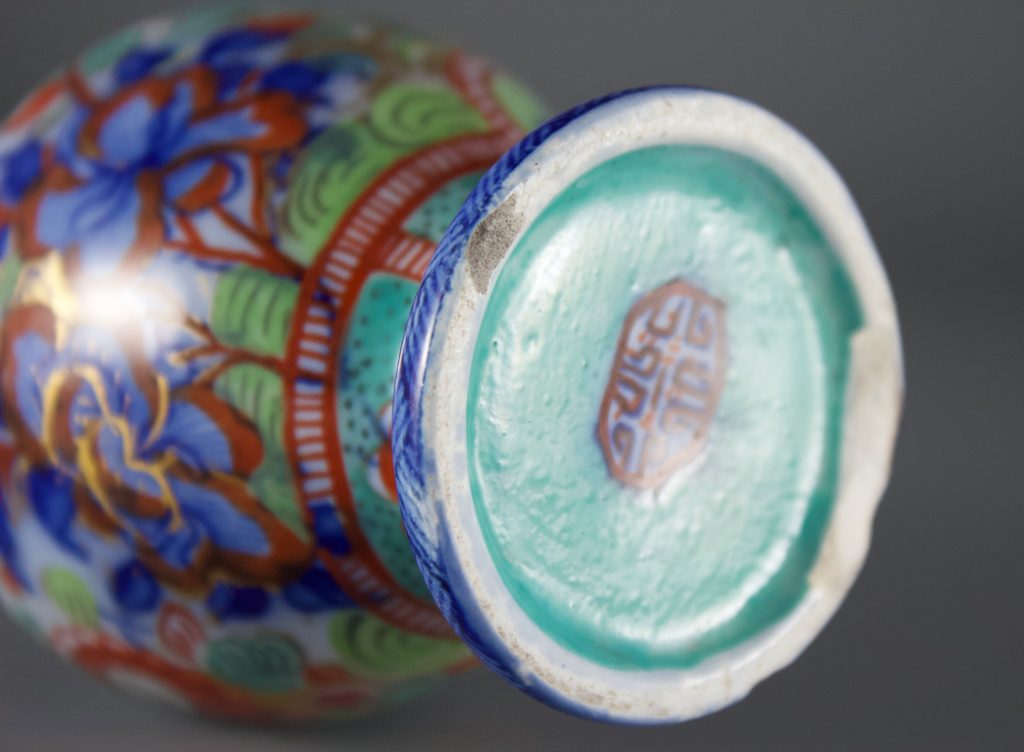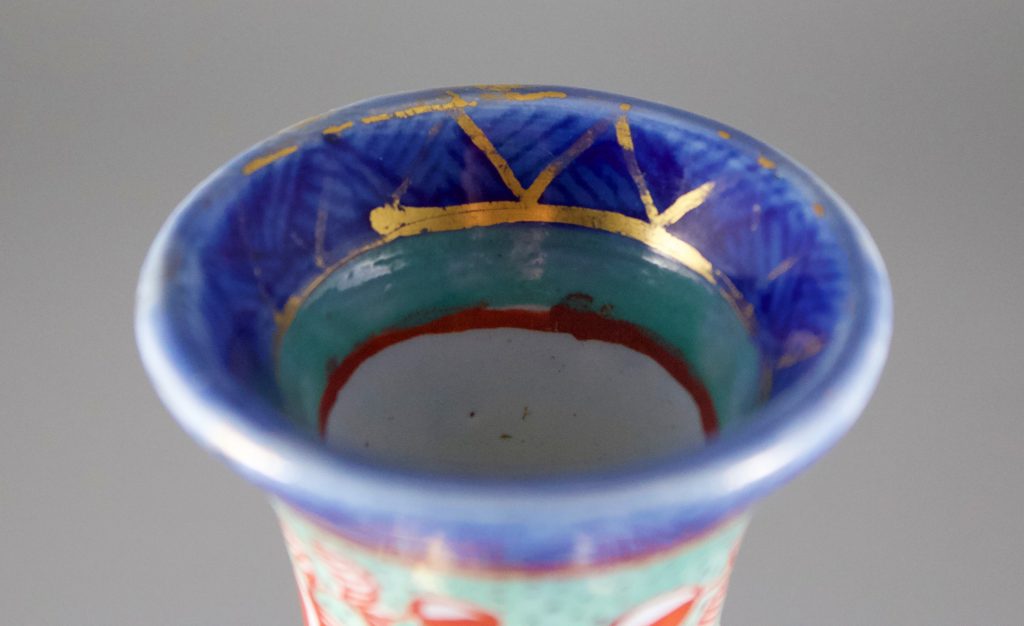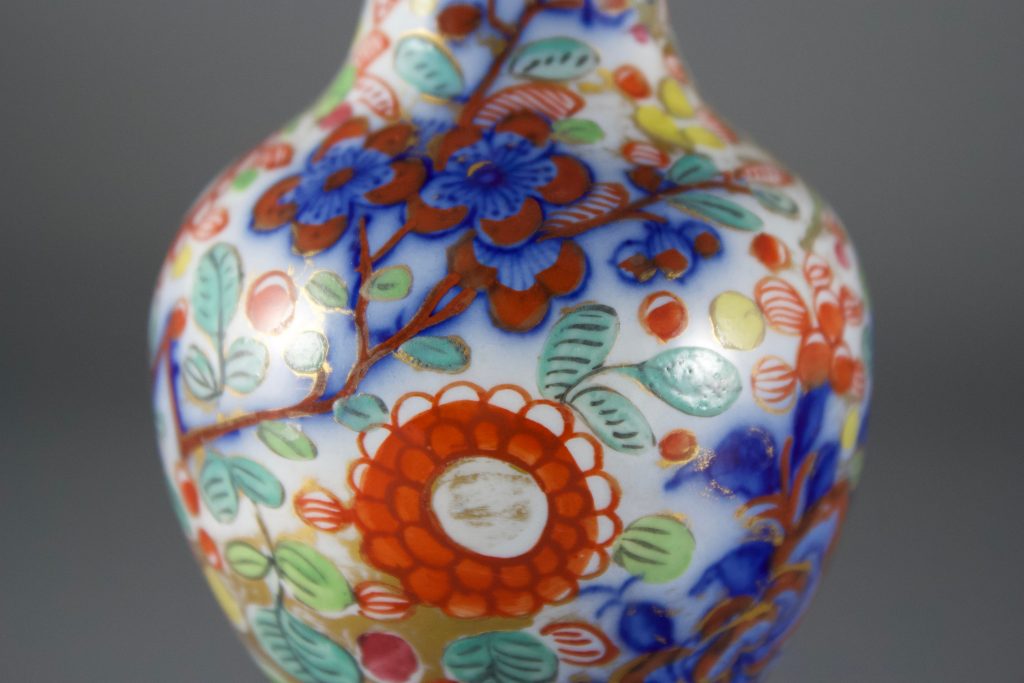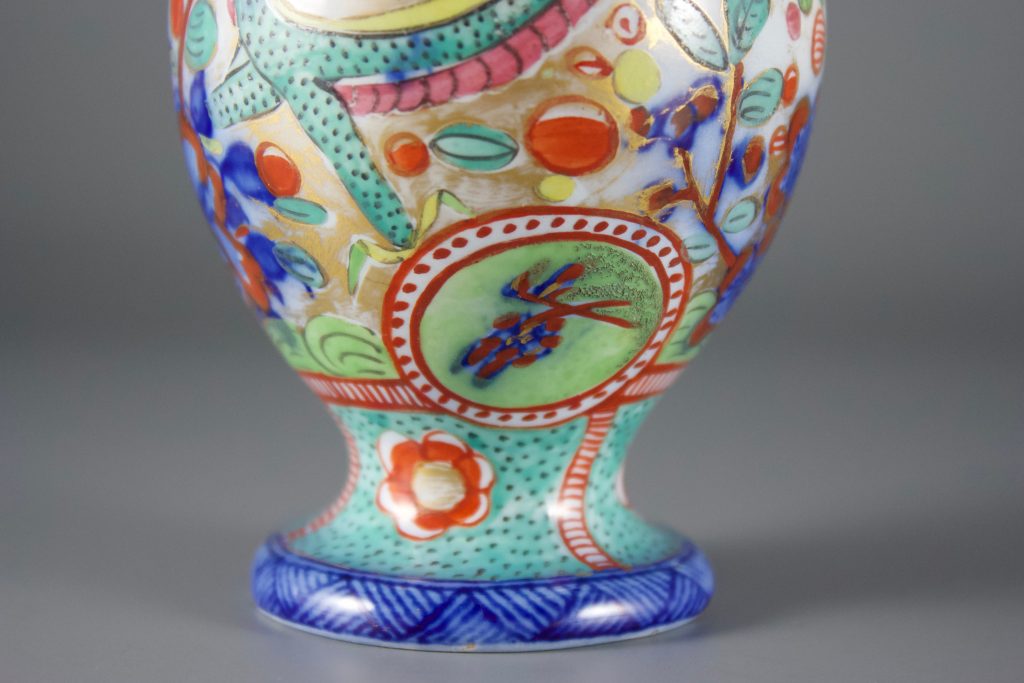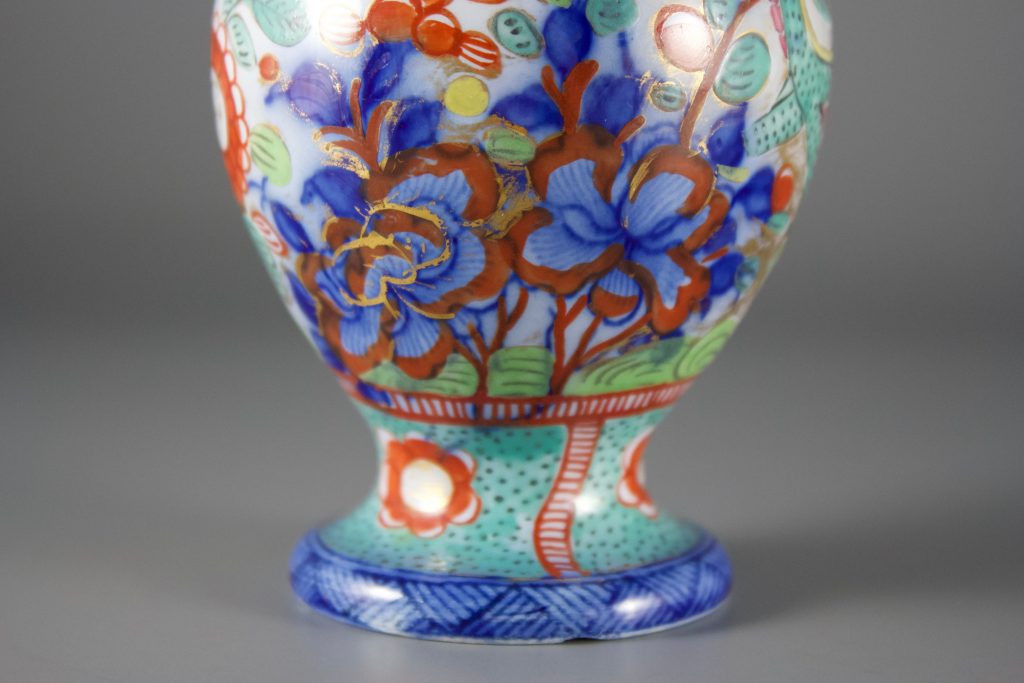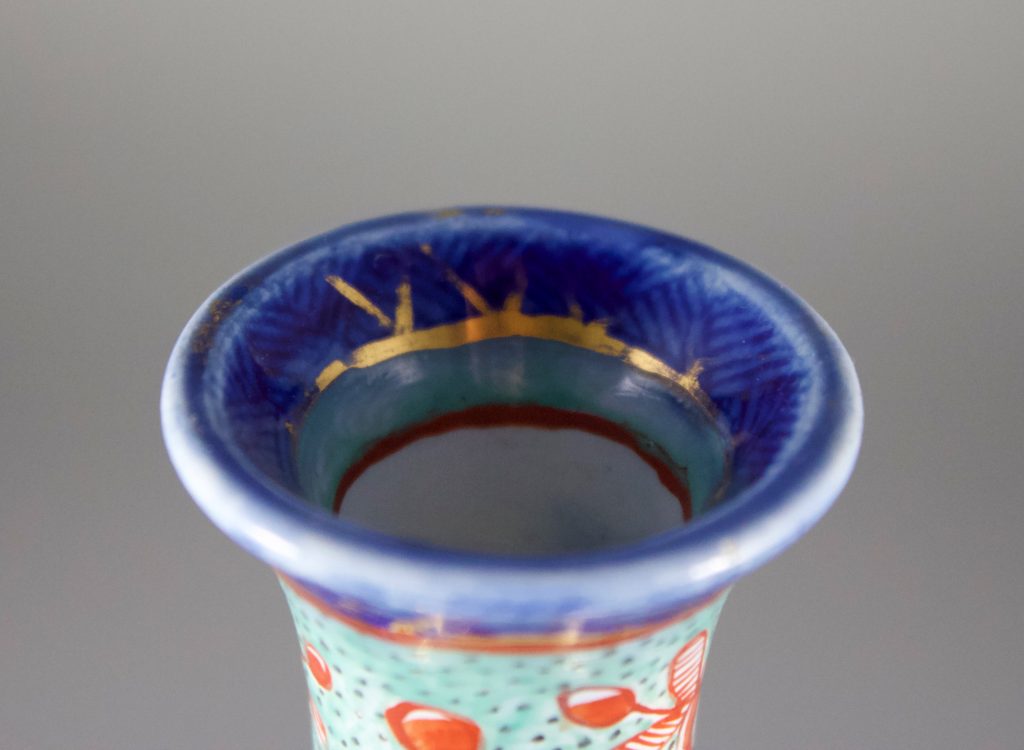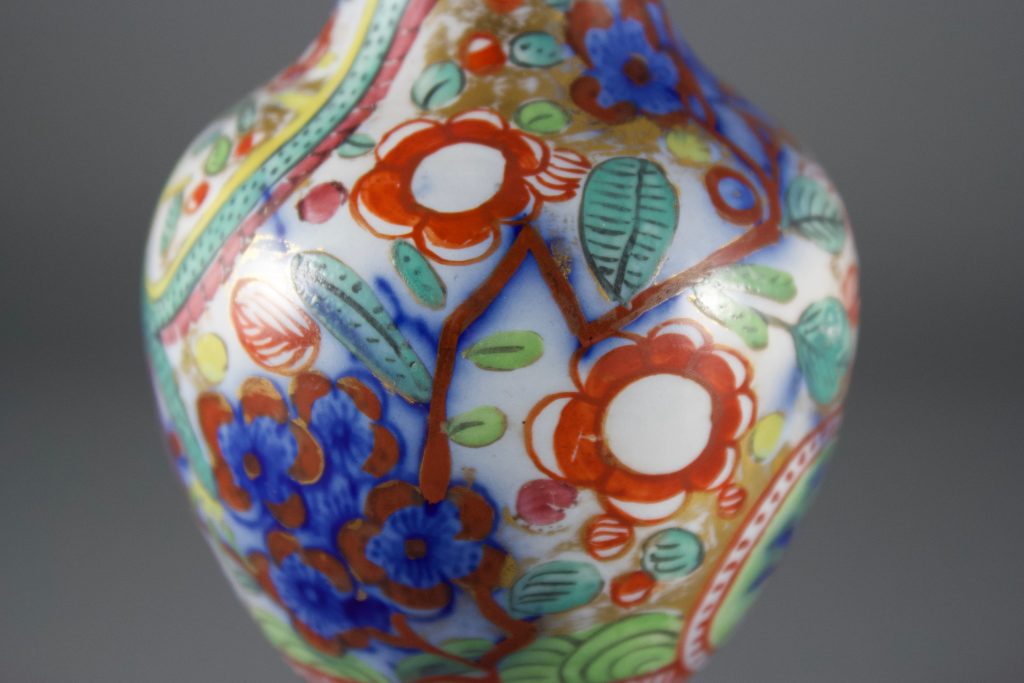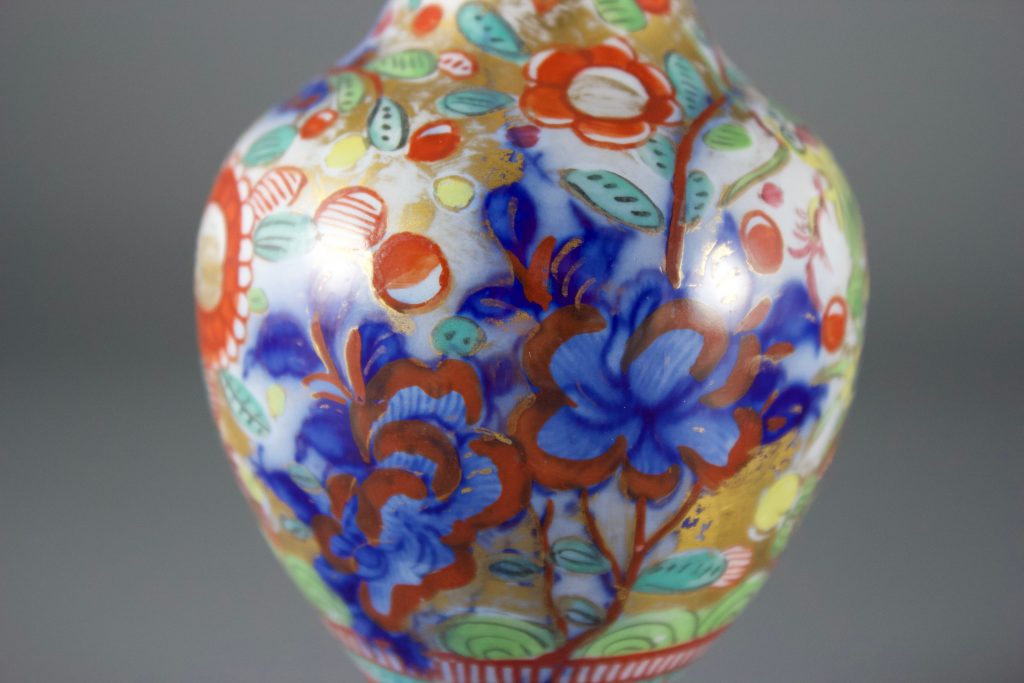A pair of clobbered ironstone Vases, English, circa 1825-40
The ovoid bodies and slender necks of this pair of ironstone vases were initially decorated with flow blue sprays of peonies and prunus blossom. Within a short time, fashion dictated they be overdecorated (clobbered) with iron-red, green, pink, turquoise and yellow enamels and gilding. The original design was enhanced with the addition of writhing dragons, arabesques, roundels and scattered flowers. The underside of both vases is decorated with turquoise enamel, with one vase having an additional ‘cracked ice’ design.
Pseudo-Chinese seal marks.
Rich decoration was particularly favoured by the Regency elite during the early part of the 19th century. At this time, the Prince Regent – later King George IV – was cultivating a vogue for the exotic orient with flamboyant projects such as the Royal Pavilion at Brighton. Many of the great English ceramic manufacturers – Worcester, Derby, Spode et al – produced wares to fulfil this demand and even enterprising individuals saw that they could compete by re-decorating earlier blue and white Chinese and Japanese porcelain with richly coloured enamels and gilding. Transitional, Kangxi and Qianlong wares received this treatment during the first half of the 19th century so that they could be used to furnish the grand houses of the upper classes, such as Ickworth in Suffolk, Calke Abbey in Derbyshire, and The Argory in County Armagh. Indeed, any blue and white ceramics provided a canvas for Regency overdecoration, whether it be Chinese or Meissen porcelain, or the ironstone of the present examples.
Condition: There is wear to the gilt decoration, although the enamels remain in good order. Both vases have chipping to the base, and a small section to the foot of one vase has been re-attached. At some point, a naughty child(?) has placed a small wooden gaming dice into one of the vases.
Dimensions: Height 16.2 cm
European Decoration on Oriental Porcelain 1700-1830, Helen Espir (Jorge Welsh Books, 2005).
The Watney Collection of Chinese Porcelain Decorated in Holland and England (Bonhams sale catalogue, 7 November, 2003).
Ref. For similar decoration, see The Atrocious Unsworth – Chinese blue and white porcelain clobbered in London in the 19th century (Helen Espir, English Ceramic Circle Transactions, Volume 29, 2018).
